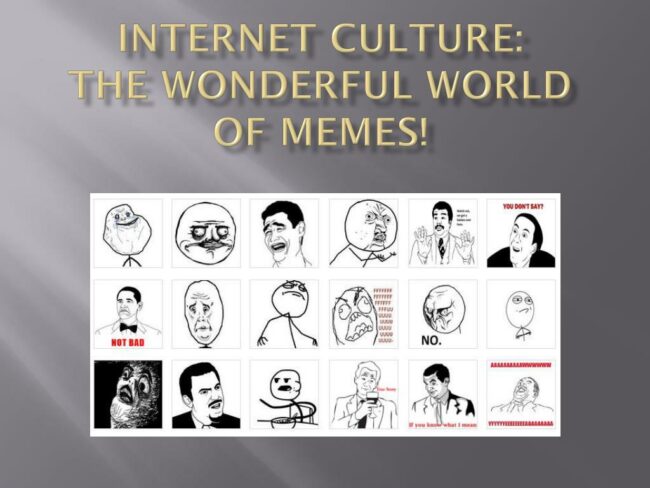Introduction In the sprawling ecosystem of the internet, where words often fail to capture the nuance of human emotion, meme faces have emerged as
Introduction
In the sprawling ecosystem of the internet, where words often fail to capture the nuance of human emotion, meme faces have emerged as one of the most vibrant and effective tools for online expression. These exaggerated, often comical faces serve as digital emoticons but with far more depth and cultural meaning. Whether crudely sketched rage faces from the early days of internet forums or viral screenshots of celebrities and everyday people, meme faces have revolutionized how we communicate, joke, and connect online.
This article dives deep into the history, evolution, significance, and future of meme faces — those quirky, iconic images that speak louder than words in the digital age.
Must visit: tradeinfinite

The Birth of Meme Faces: From Rage Comics to Internet Phenomena
The journey of meme faces began in the late 2000s with the rise of rage comics, a genre of simple, black-and-white webcomics featuring stick figures and highly expressive faces. These comics, originally popularized on sites like 4chan, Reddit, and Something Awful, depicted relatable everyday struggles—from technical frustrations to social awkwardness—using a consistent set of exaggerated facial expressions.
Key meme faces from this era include:
- Rage Guy (FFFFFUUUU), expressing intense anger.
- Forever Alone, symbolizing loneliness and social isolation.
- Trollface, representing internet trolling and playful mischief.
- Me Gusta, showing awkward pleasure or satisfaction.
- Y U NO Guy, expressing frustration and confusion.
These simple drawings quickly transcended their original comics to become standalone memes, widely shared and adapted across social platforms.
Why Meme Faces Resonated: The Power of Visual Emotion
Humans are hardwired to recognize and interpret facial expressions — a skill critical for social bonding and communication. Meme faces leverage this biological instinct by amplifying emotions through extreme, instantly recognizable expressions. This makes them effective for:
- Quick communication: A single meme face can convey feelings faster than a sentence.
- Universality: Facial expressions cross cultural and language barriers, making meme faces globally relatable.
- Humor and irony: The exaggerated nature allows for absurd, layered humor that appeals to internet subcultures.
- Empathy and solidarity: Sharing a meme face is a way to say, “I get what you’re feeling” without words.
Because meme faces combine simplicity with emotional depth, they became a natural fit for the fast-paced, text-heavy environment of the internet.
The Expansion: From Drawings to Real-Life Meme Faces
As internet culture evolved, meme faces moved beyond doodles to include photos and video captures of real people making iconic expressions. The rise of smartphones and social media platforms like Twitter, Instagram, and TikTok enabled this transition.
Popular real-life meme faces include:
- Crying Michael Jordan: A humorous symbol of defeat or sadness.
- Side-Eye Chloe: A skeptical child’s sideways glance.
- Woman Yelling at a Cat: A meme pairing a yelling woman and a confused cat.
- Disaster Girl: A girl smiling mischievously in front of a burning house.
These images carry the immediacy of real emotion and the familiarity of celebrity or viral content, broadening meme faces’ appeal and usage.
Meme Faces as a New Digital Language
Meme faces have essentially become a new form of digital body language, filling in the emotional gaps left by written communication. Unlike emojis, which are standardized and limited in expression, meme faces are:
- Customizable and remixable: Users can edit, combine, and adapt faces for new meanings.
- Context-rich: They often come loaded with cultural or situational connotations.
- Narrative-driven: Many meme faces tell a story or represent a shared experience.
For example, posting a “Forever Alone” meme face expresses not just loneliness, but a comedic take on social struggles, making it both a personal and communal expression.
Meme Faces Reflecting Generational Mindsets
Meme faces are particularly prominent in Millennial and Gen Z culture, serving as mirrors to their shared anxieties, humor styles, and social attitudes.
- Millennials often use meme faces to express ironic self-awareness, nostalgia, and the frustrations of adult life.
- Gen Z frequently uses meme faces in layered, meta-humor and social commentary, often via Wojak variants like “Doomer,” “Zoomer,” or “NPC.”
Meme faces have become symbols not just of emotion, but of identity and worldview, encapsulating complex societal feelings in simple, viral images.
Meme Faces and Internet Communities
Meme faces thrive in online communities where shared understanding of references builds trust and camaraderie. Subreddits, Discord servers, and meme-focused pages often develop their own inside jokes and unique meme face variations.
This creates a dynamic where meme faces serve as:
- In-group markers: Signaling membership and shared knowledge.
- Social lubricants: Easing difficult conversations or conflicts with humor.
- Emotional outlets: Providing a safe space for expressing vulnerability or frustration.
Through these functions, meme faces contribute to the social fabric of internet culture.
The Commercialization and Challenges of Meme Faces
As meme faces gained mainstream traction, brands began incorporating them into advertising to capture younger demographics’ attention. While this sometimes works, it comes with challenges:
- Authenticity risks: Forced or inappropriate use of meme faces can backfire.
- Copyright issues: Some meme faces, like Trollface, are copyrighted, limiting commercial use without permission.
- Misinterpretation: Meme faces carry nuanced meanings; misuse can cause misunderstandings or offense.
Still, savvy marketers see meme faces as powerful tools for relatable, viral messaging.
The Future: Meme Faces in an AI and AR World
Technology continues to shape meme faces’ evolution:
- AI-generated meme faces can create new, never-before-seen expressions based on current trends.
- Augmented reality filters allow users to transform their faces into meme faces in real time.
- Animated meme faces and GIFs add motion and further emotional depth.
- Virtual and metaverse spaces will integrate meme faces into avatars and social interactions.
These developments promise to make meme faces even more immersive, personalized, and interactive.
Frequently Asked Questions (FAQs)
Q1: Can anyone create a meme face?
Yes. Many meme faces start as simple sketches or photos. Creativity and timing matter more than artistic skill.
Q2: Are meme faces copyrighted?
Some are. For example, Trollface is copyrighted. Using such images commercially requires permission.
Q3: How are meme faces different from emojis?
Meme faces are often more complex, culturally loaded, and customizable, whereas emojis are standardized and generic.
Q4: Why do meme faces resonate so well online?
Because they tap into our instinctive recognition of facial expressions and communicate emotions quickly and humorously.
Q5: Can meme faces be offensive?
Yes. Context and intent matter. Some meme faces have been misused or linked to negative stereotypes, so sensitivity is important.
Conclusion
Meme faces have fundamentally changed how we communicate online, adding color, humor, and emotional depth to an otherwise text-dominated landscape. They function as a new digital language—one that’s instantly understandable, endlessly adaptable, and deeply connected to our shared human experience.
From simple rage comics to viral real-life snapshots and AI-driven animations, meme faces reflect the creativity, complexity, and ever-evolving nature of internet culture. As technology and social media continue to advance, meme faces will undoubtedly remain a key part of how we connect, express, and laugh in the digital age.




COMMENTS